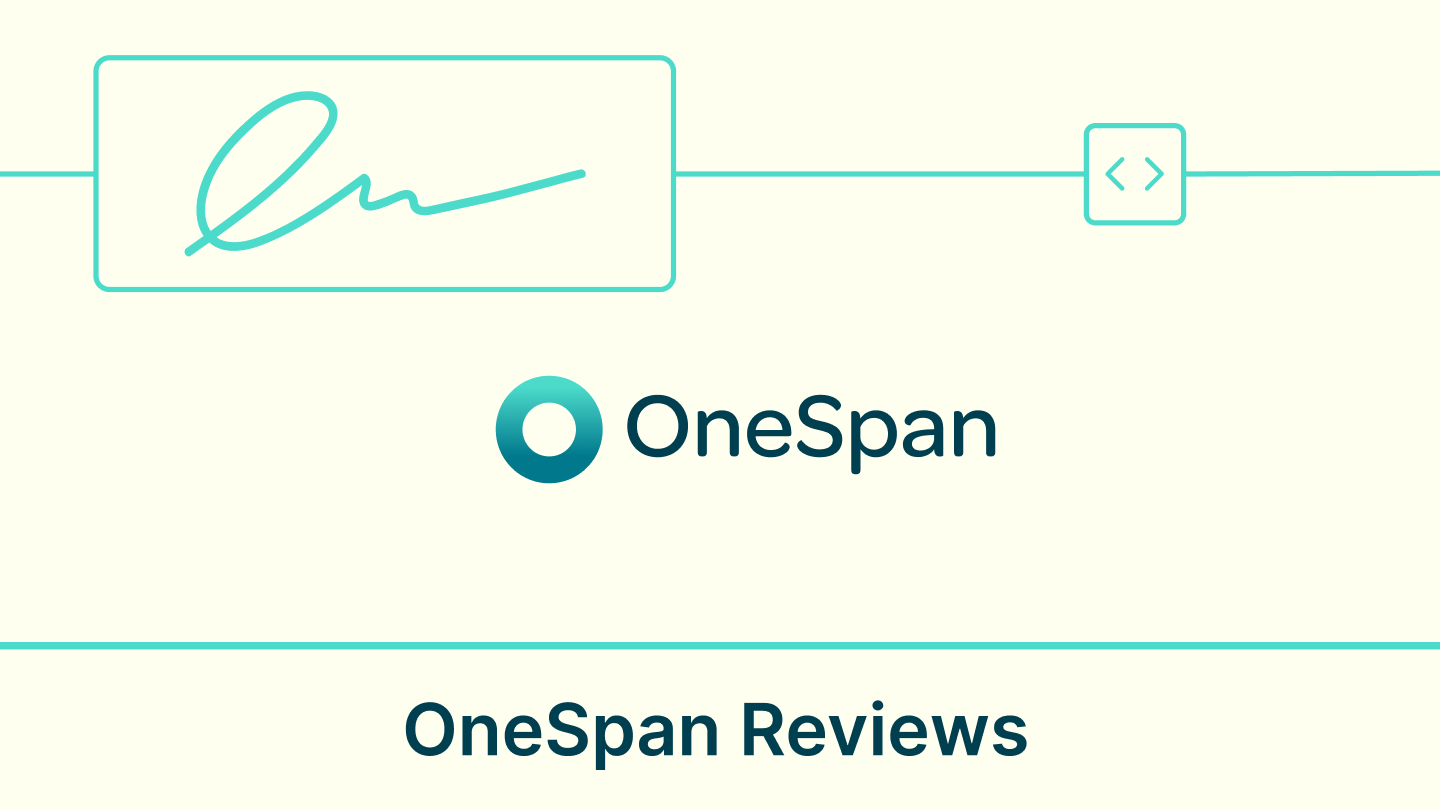A signature block, also known as a signature line or signature area, is a section typically found at the end of a document, email, letter, or formal communication where a person’s name, title, contact information, and often a handwritten or electronic signature appear.
It serves to identify the sender, authenticate the document, convey authority, provide contact information, and maintain a professional appearance in written or digital communications.
In this article, we'll explore signature blocks and answer questions like why you need one, how to make your own, what goes into them, and we'll even give you some templates to use.
What is a signature block?
In most emails and contracts, you’ll likely observe the sender’s signature at the bottom of the document. If you pay attention, you’ll notice that alongside the signature, there’s often the printed name of the signer, their job title, phone number, and other relevant information. This collection of details is commonly referred to as a signature block.
What's the purpose of a signature block?
The purpose of a signature block is to:
- Identify the sender: It provides information about the person or entity sending the document or communication, including their name, title, and organization.
- Authenticate the document: It helps verify the authenticity of the content and confirms that it was sent by the stated sender.
- Convey authority: It communicates the sender's role or position within an organization, indicating their authority or responsibility.
- Provide contact information: It offers contact details, making it easy for recipients to respond or get in touch for further communication.
- Establish a professional image: It contributes to the professional appearance of the document or communication, especially in business and formal contexts.
What are the standard components of a signature block?
A signature block typically looks like the following:
[Name]
[Job Title]
[Company Name]
[Address]
[Phone Number]
[Email]
For instance:
John Smith
Marketing Manager
ABC Corporation
123 Oak Street, Suite 789
New York, NY 10001
Phone: (555) 555-5555
Email: john.smith@email.com
In this example:
- "John Smith" is the sender's name.
- "Marketing Manager" is the sender's job title.
- "ABC Corporation" is the sender's organization.
- The address, phone number, and email provide contact information.
What's the difference between the signature block and signature field
A "signature block" and a "signature field" serve related but distinct purposes in document management and digital signatures:
Signature blocks in legal and formal documents
In legal and formal documents where precision and authentication are critical, such as contracts, agreements, legal correspondence, and official records, the signature block takes on paramount importance.
In such contexts, a signature block typically includes not only the sender's name, title, and contact information but also the date of signing and sometimes the recipient, witness, and notary's information. The purpose is to ensure legal validity, establish accountability, and provide a clear record of the agreement or transaction.
An example of a signature block in a legal document would be
______________________________
[Full Name of Signatory]
[Title or Capacity, if applicable]
[Company or Organization Name, if applicable]
[Date: ______________]
______________________________
[Signature of Signatory]
[Additional space for witnesses' signatures, if required]
______________________________
[Full Name of Witness, if applicable]
[Title or Capacity of Witness, if applicable]
[Date: ______________]
______________________________
[Signature of Witness, if applicable]
[Notary Block, if notarization is required]
In this example:
- The signatory's full name, title or capacity, and the name of the company or organization (if applicable) are included.
- There's a space for the date of signing.
- The signatory's signature is placed on the line provided.
- If witnesses are required, there's space for their full names, titles or capacities, dates, and signatures.
- If notarization is needed, a separate notary block would appear below the signature block, where a notary public can acknowledge and certify the signature's authenticity.
Legal and formal documents may also require specific language or clauses within the signature block to address legal requirements or conditions. For instance, you might find statements like "By signing below, I agree to the terms and conditions outlined in this agreement."
The exact format and content of signature blocks in legal and formal documents can vary depending on jurisdiction, document type, and legal requirements. Therefore, careful attention to detail and adherence to legal standards are essential in these contexts to avoid any potential disputes or challenges.
Signature blocks in formal documents are usually associated with senders. The block consists of the name of the sender, the address, or the company name. Just to make the whole content look more professional and reliable.
Types of documents using signature blocks
Signature blocks are employed in a wide range of documents across various fields, serving diverse purposes. They are an indispensable feature of modern online document signing solutions. Here are some common types of documents where you'll find signature blocks:
1. Contracts
Legal agreements, such as sales contracts, employment contracts, and lease agreements, utilize signature blocks to confirm the parties' consent and commitment to the terms.
Example: In a lease agreement, the landlord and tenant both sign the contract in the signature block to acknowledge their agreement to the rental terms.
______________________________
[Full Name of Party A]
[Title or Capacity of Party A, if applicable]
[Company or Organization Name of Party A, if applicable]
[Date: ______________]
______________________________
[Signature of Party A]
______________________________
[Full Name of Party B]
[Title or Capacity of Party B, if applicable]
[Company or Organization Name of Party B, if applicable]
[Date: ______________]
______________________________
[Signature of Party B]
2. Business correspondence
Formal business letters and emails often include a signature block at the sender's end, reinforcing professionalism and providing contact information.
Example: A business email from a company executive might feature a signature block with their name, title, company, and contact details.
Best Regards,
John Smith
Marketing Manager
ABC Corporation
Phone: (555) 555-5555
Email: john.smith@email.com
3. Legal documents
Legal paperwork, including wills, affidavits, and power of attorney forms, require signature blocks to ensure the validity and authenticity of the document.
Example: A power of attorney form includes signature blocks for both the person granting power and the appointed attorney-in-fact.
_____________________________
[Full Legal Name of the Grantor/Declarant]
[Title or Capacity, if applicable]
[Date: ______________]
______________________________
[Signature of Grantor/Declarant]
[Notary Block, if notarization is required]
4. Financial agreements
Financial documents like loan agreements, promissory notes, and investment contracts rely on signature blocks to secure financial commitments.
Example: A promissory note contains a signature block for the borrower to acknowledge the debt and repayment terms.
_____________________________
[Full Name of Borrower]
[Title or Capacity, if applicable]
[Date: ______________]
______________________________
[Signature of Borrower]
5. Healthcare forms
Medical consent forms, patient intake forms, and healthcare directives incorporate signature blocks for patients and healthcare providers to endorse and confirm decisions.
Example: In a healthcare directive, the patient's signature block signifies their informed consent regarding end-of-life decisions.
______________________________
[Full Name of Patient]
[Date of Birth: ______________]
[Date: ______________]
______________________________
[Signature of Patient]
______________________________
[Full Name of Healthcare Provider]
[Title or Capacity, if applicable]
[Date: ______________]
______________________________
[Signature of Healthcare Provider]
6. Government forms
Official government documents, such as tax forms, voter registration applications, and certifications, feature signature blocks to validate the accuracy of the information provided.
Example: A professional certification may require the candidate's signature to confirm their eligibility and acceptance of certification terms.
______________________________
[Full Name of Candidate]
[Certification Name: ______________]
[Date of Certification: ______________]
______________________________
[Signature of Candidate]
7. Academic and research papers
In academic and research contexts, signature blocks may appear on research proposals, grant applications, thesis submission forms, and academic certificates.
Example: An academic certificate includes a signature block for the institution's representative and the recipient to validate the award.
______________________________
[Full Name of Author/Researcher]
[Academic Degree, if applicable]
[Institution/Organization: ______________]
[Date: ______________]
______________________________
[Signature of Author/Researcher]
Different formats of signature blocks
Signature blocks can take various formats to suit the needs of different documents and communication styles. Here are some common formats along with examples:
1. Traditional handwritten signature blocks
Traditional handwritten signature blocks usually include the wet signature of a signer along with the date and position. However, these signatures are prone to forgery. Therefore, sensitive documents require witnesses like a notary public before signing.
Example:
Sincerely,
[Full Name]
[Title or Position]
[Company or Organization]
[Contact Information]
2. Digital and electronic signature blocks
The electronic signature blocks like email signature blocks are created using digital solutions, often supported by a built-in online signature generator that lets you create a reusable sign-off instantly. It allows you to create the signature blocks and carry forward the signature process digitally from anywhere, which is particularly useful when you need to quickly sign on pdf online while ensuring all required contact information is appended. At the same time keeps the signature process safe with authentication methods such as biometrics detection, encryption, and OTP.
Example of digital signature block:
/s/ John Doe
Example of electronic signature block
--
John Smith
Marketing Manager
ABC Corporation
Phone: (555) 555-5555
Email: john.smith@email.com
What are the benefits of the signature block?
Signature blocks offer several benefits in various forms of communication and documentation. Here are some of the key advantages:
- Identification: Signature blocks help identify the sender or signatory, making it clear who is responsible for the document or communication.
- Authentication: They provide a way to verify the authenticity of the document or message, reducing the risk of forgery or tampering.
- Professionalism: Including a well-crafted signature block adds a professional touch to documents and emails, enhancing their credibility.
- Contact Information: Signature blocks often contain contact details, making it easy for recipients to contact for further communication or clarification.
- Legal Clarity: In legal and formal documents, signature blocks are essential for defining the parties involved and their roles, which is crucial for legal clarity and enforceability.
- Branding: In corporate communications, signature blocks can include company logos and branding elements, reinforcing brand identity.
- Efficiency: For electronic documents and forms, signature blocks streamline the signing process, making it convenient and efficient for both senders and recipients.
- Consistency: Standardized signature blocks ensure uniformity in communications within an organization, maintaining a consistent and professional image.
- Compliance: In regulated industries or for legal compliance, signature blocks help ensure that documents meet specific requirements, such as notarization or electronic signature standards.
- Record Keeping: They facilitate document management and record-keeping by clearly indicating who signed the document and when.
Create your signature block with Signeasy
A well-crafted signature block is a vital component of effective communication and document management. It not only identifies the sender but also adds professionalism and credibility to your messages.
To streamline this process, consider using Signeasy—a user-friendly digital signature solution that simplifies contract workflows and ensures secure, legally binding electronic signatures.
With Signeasy, you can effortlessly manage your documents, enhance your professional image, and save valuable time. Try Signeasy today and elevate your contract workflow experience.
You can now have your own customized signature blocks along with convenience and security with Signeasy. You can start a free trial today.











